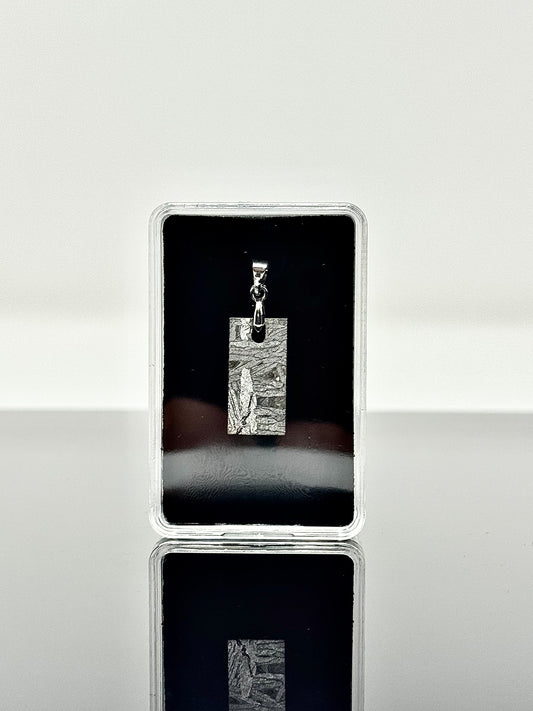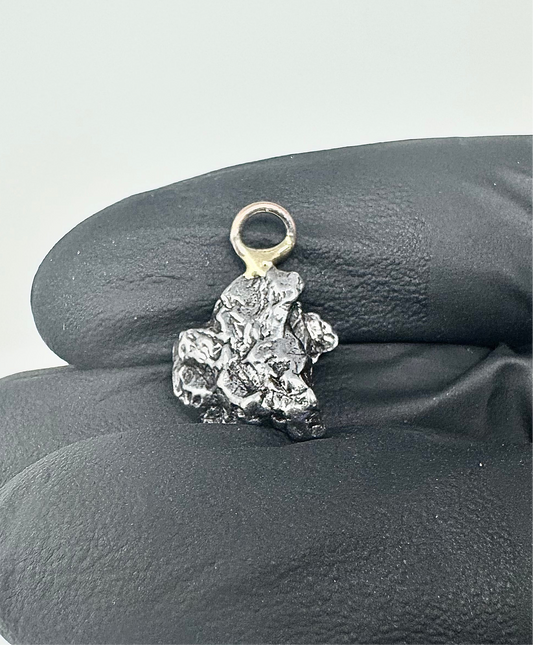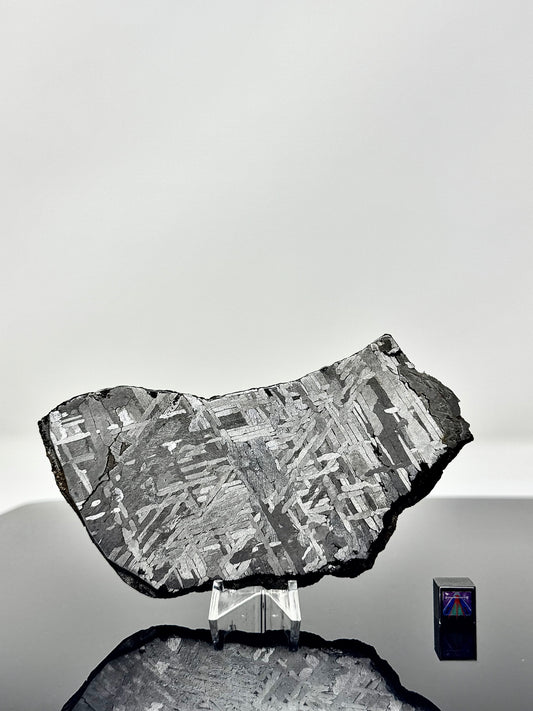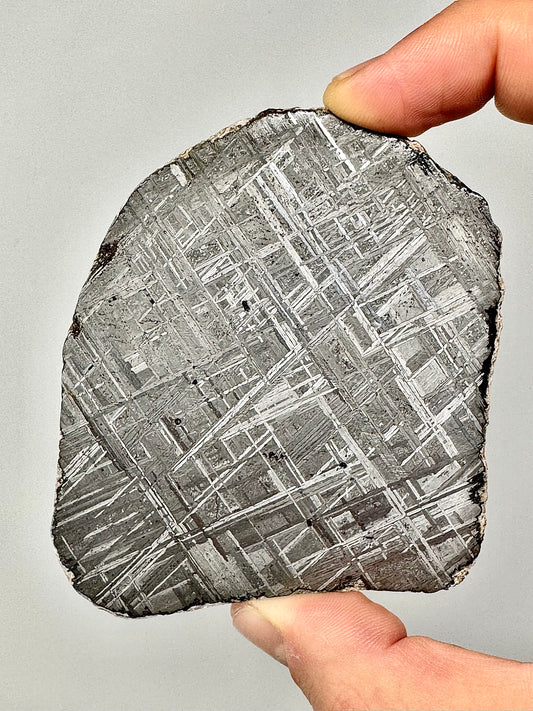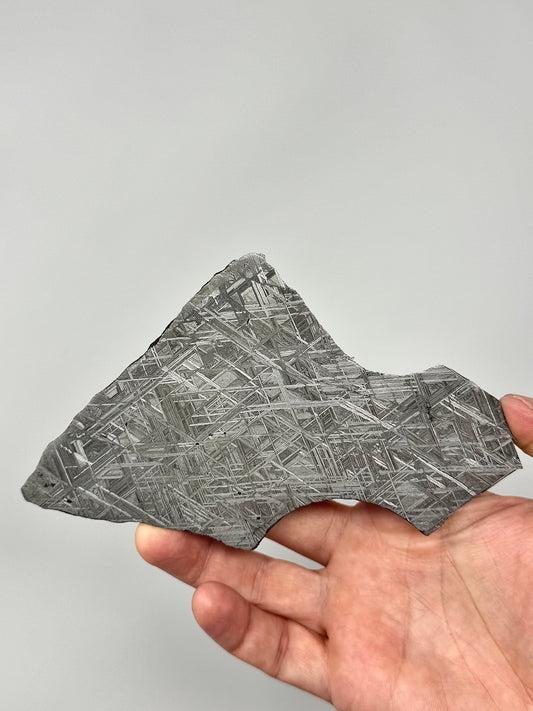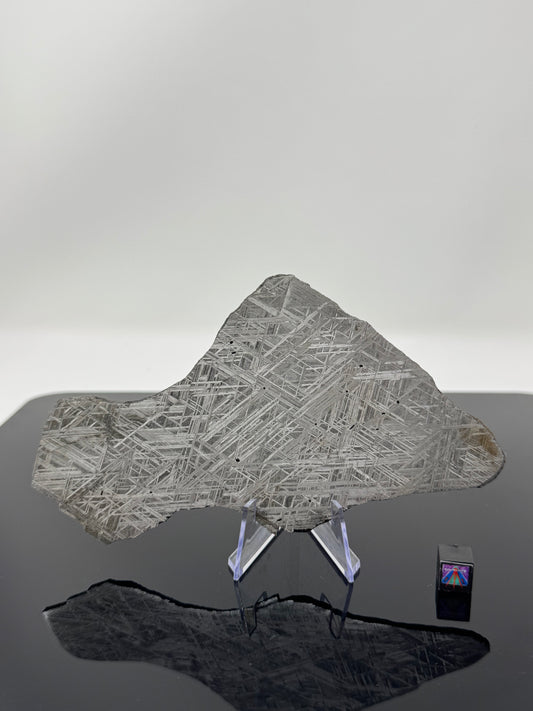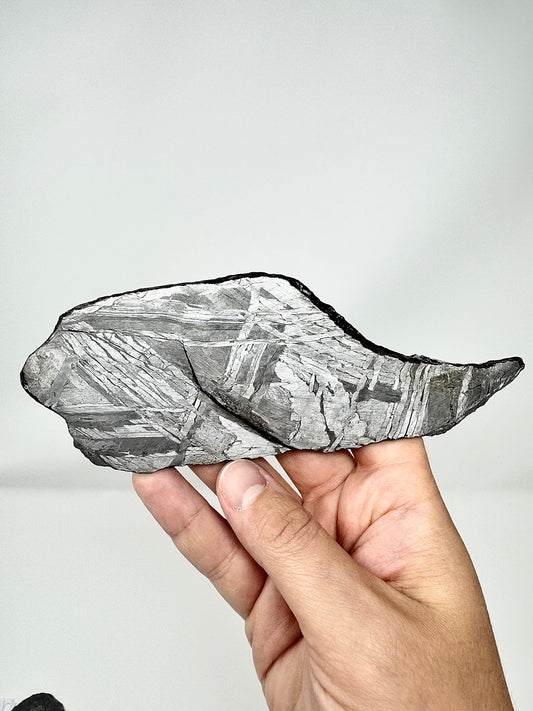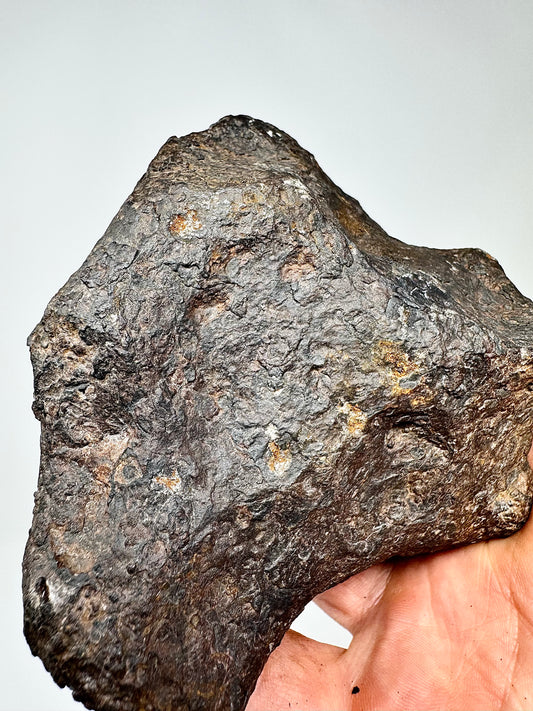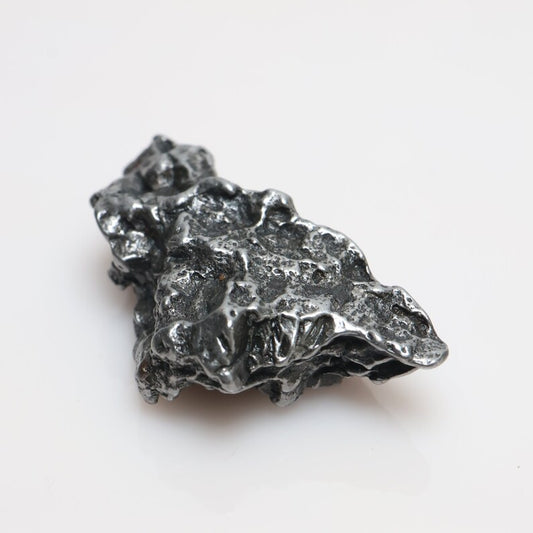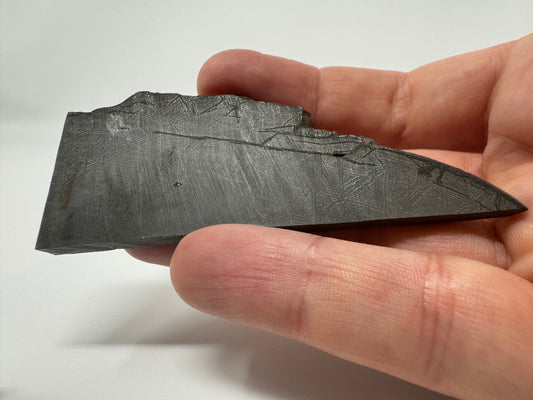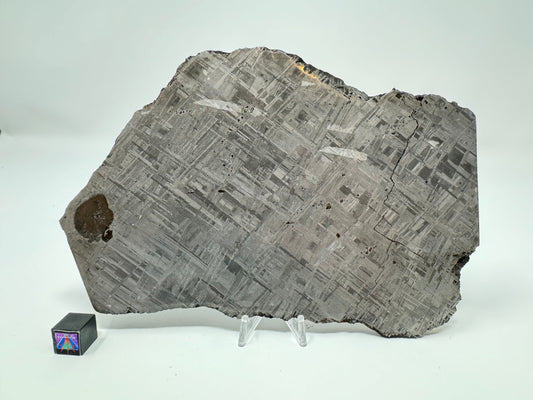Collection: Iron Meteorites (Parent Body: Core of Asteroids)

Iron meteorites are composed predominantly of nickel and iron, with nickel content typically ranging between 5% and 20%. During the early formation of our solar system, large asteroids experienced internal melting, causing the denser nickel-iron alloy to sink toward the core, where it cooled slowly over millions of years.
This slow cooling process results in distinctive crystalline structures called Widmanstätten patterns, which are visible when the meteorite’s surface is acid-etched. These patterns are created by the crystallization of two iron-nickel alloys—kamacite and taenite—during the asteroid’s cooling. The patterns resemble a "thumbprint" unique to each meteorite and are impossible to replicate in terrestrial iron objects, as they require extremely slow cooling rates—about 1 degree Celsius per ten thousand years—to form.
Iron meteorites are classified into different groups (such as I, IIAB, IIIAB) based on their chemical composition and trace elements. Skilled professionals typically stabilize, slice, and polish the meteorite before etching to reveal these patterns.
In addition to the Widmanstätten pattern, iron meteorites often contain mineral inclusions like schreibersite and phosphides, which provide insights into the conditions within their parent bodies.
-
Iron Aletai Meteorite Pendant - From The Core Of An Asteroid! Wear Space! *Pendant Only
Regular price $58.00 USDRegular priceUnit price / per -
Campo Iron Meteorite Pendant (Small) - From The Core Of An Asteroid! Pendant Only
Regular price $30.00 USDRegular priceUnit price / per -
24.2g Aletai Meteorite - Beautiful Pattern - From The Core Of An Asteroid!
Regular price $240.00 USDRegular priceUnit price / per -
27.9g Nantan Meteorite - END CUT! A Space Rock Originally Recovered for China’s Industrial Era!
Regular price $140.00 USDRegular priceUnit price / per -
Historical Toluca Meteorite Found in 1776! Used As Tools For Centuries! From The Core Of An Asteroid! 148.5g
Regular price $890.00 USDRegular priceUnit price / per -
Muonionalusta Iron Meteorite - 96.1g Full Slice - From The Core Of An Asteroid!
Regular price $965.00 USDRegular priceUnit price / per -
“The Infinity Iron” NWA 17092 - 160.6g Full Slice - From The Core Of An Asteroid
Regular price $1,600.00 USDRegular priceUnit price / per -
“The Infinity Iron” NWA 17092 - 149.1g Full Slice - From The Core Of An Asteroid
Regular price $1,490.00 USDRegular priceUnit price / per -
Seymchan Pallasite Meteorite - Full Slice - Nickel/Iron Boundary - From An Asteroid - 263.9g
Regular price $1,800.00 USDRegular priceUnit price / per -
Muonionalusta Iron Meteorite - 143.6g - Full Slice - From The Core Of An Asteroid!
Regular price $1,295.00 USDRegular priceUnit price / per -
1,990g Campo Del Cielo Iron Meteorite - Nice shape and features!
Regular price $2,605.00 USDRegular priceUnit price / per -
1,150g Campo Del Cielo Iron Meteorite - Beautiful Features and a HUGE regmyglypt!
Regular price $1,534.00 USDRegular priceUnit price / per -
Campo Del Cielo Iron Meteorite - Beautiful Features - 880g
Regular price $1,180.00 USDRegular priceUnit price / per -
Campo Del Cielo Iron Individual Meteorite from Argentina! Randomly Selected from 10-25g Individuals
Regular price $25.00 USDRegular priceUnit price / per -
Gibeon Meteorite - 64.1g - The Famous Anvil Specimen Used As An Ancient Tool!
Regular price $2,900.00 USDRegular priceUnit price / per -
Muonionalusta Iron Meteorite - 759.8g - Thick Cut!
Regular price $6,040.00 USDRegular priceUnit price / per
